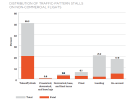francisco collazos
Pre-takeoff checklist
- Joined
- Jun 11, 2021
- Messages
- 468
- Display Name
Display name:
ciscovet
So I have been wondering if stalls from base to final are more likely if the downwind lag is closer to the airport? The pilot makes the turn to base and then has to turn final when closer to the approach end therefore over/undershooting the approach. So my question is based on this assumption,if this is one of the leading causes of crashes wouldn't it make more sense to teach wider patterns? Of course people are going to say to stay close to the airport in case of an engine out but it seems like we are worried about something that would happen less frequently i.e engine out vs. stall. I mean we are worried about an engine out near an airport.
Please correct me if i'm wrong.
Please correct me if i'm wrong.



